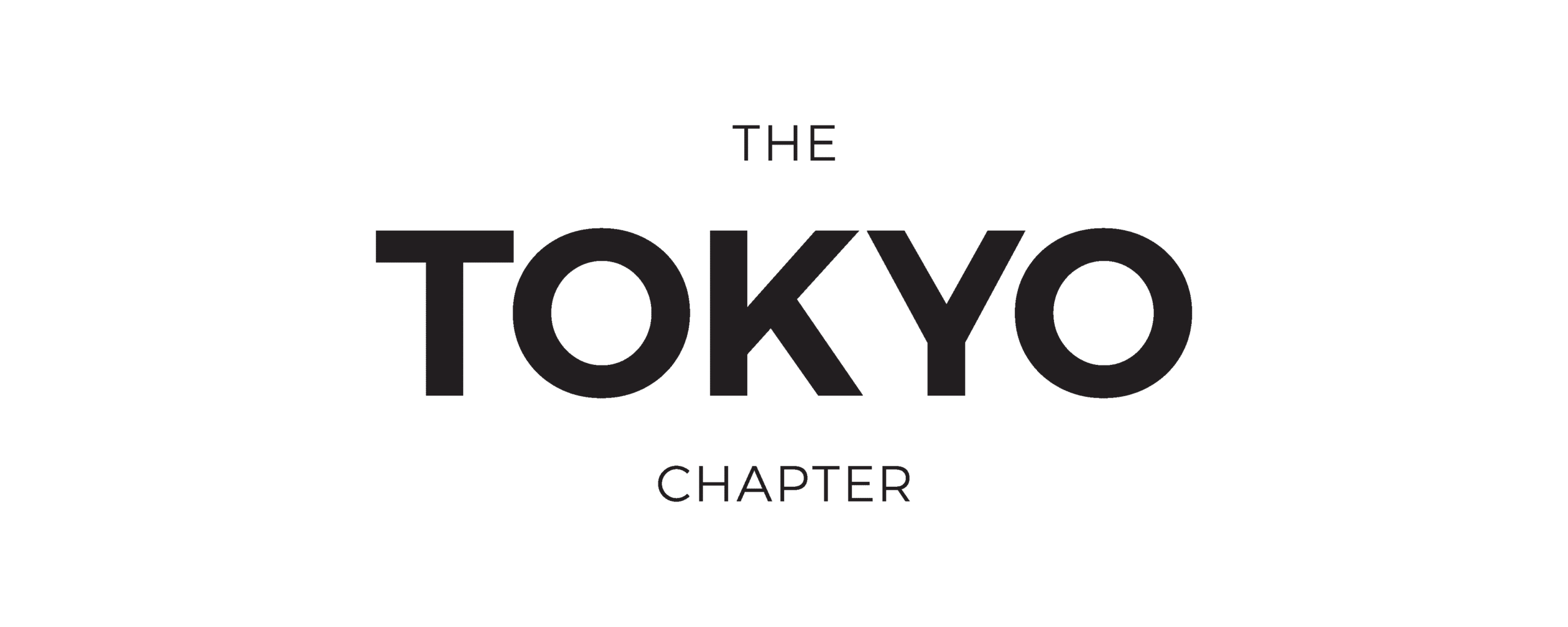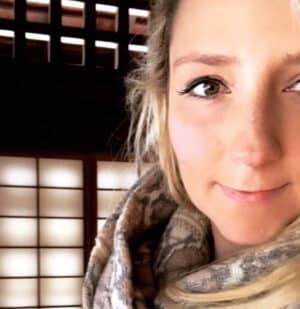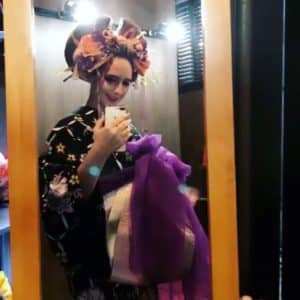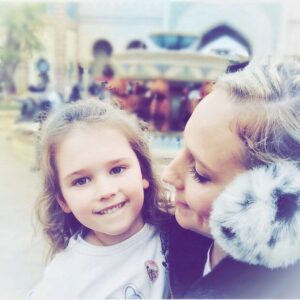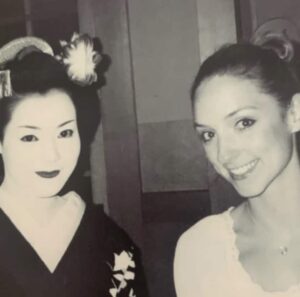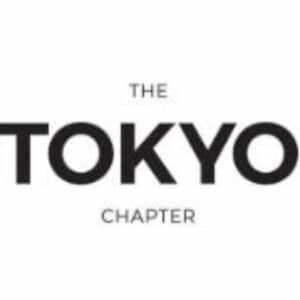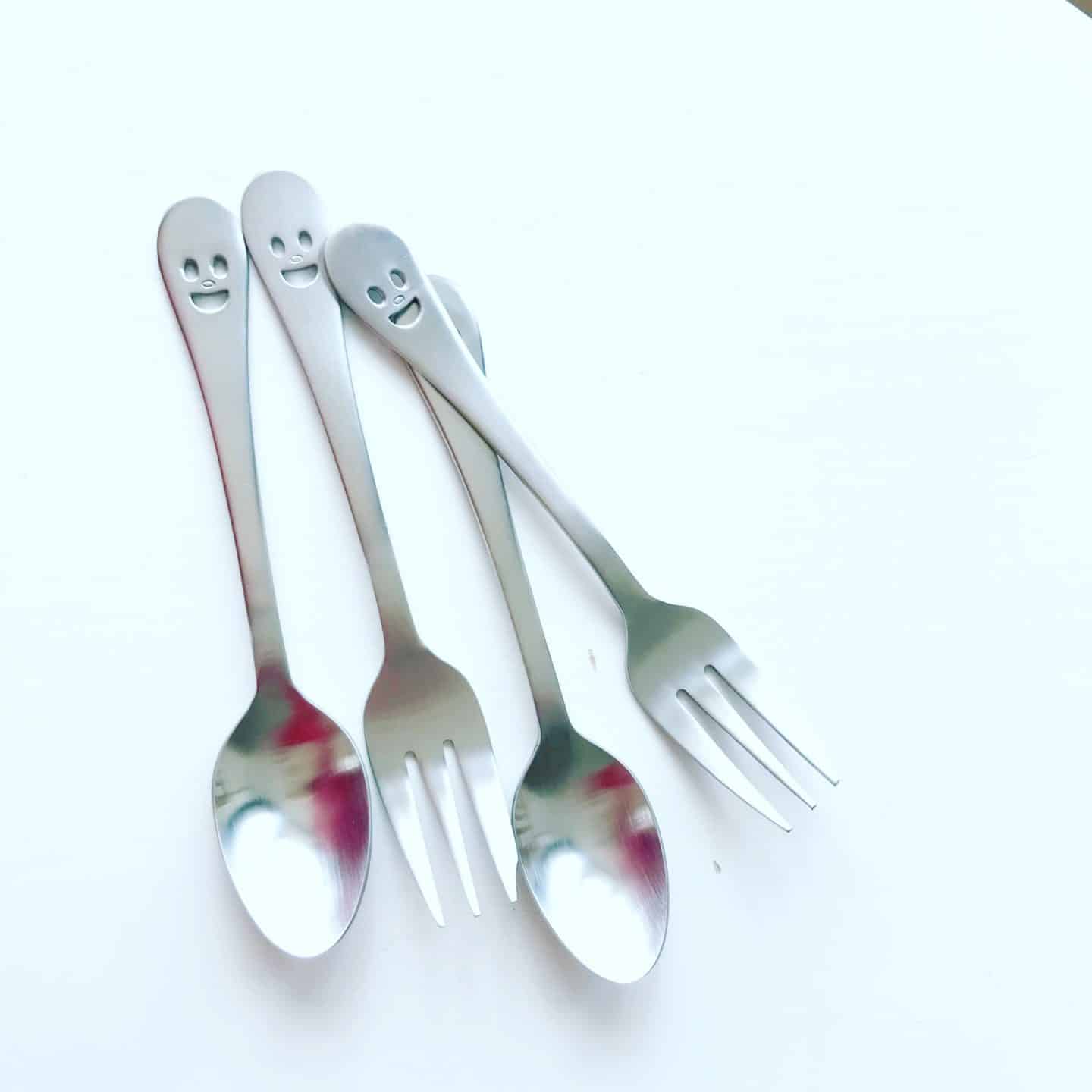
Where to buy baby food in Japan?
The quickest way to get to the biggest selection of baby food in larger cities is to google your closest Toys R Us and Babies R Us.
Alternatively, try your closest Akachanhompo.
See here if you are looking for where to buy diapers/nappies in Tokyo.
If you’ve come here wondering when is the best age to travel to Japan with kids – my answer is ANY AGE! (There is, however, one stage with small kids than I do find trickier than with others. And I talk about that in detail here.)
The next place to try is your local drugstore and some supermarkets (although drugstores are your safest bet.)
Also, it may surprise you but your closest BIC Camera and Yodobashi Camera also often have a baby section that includes baby food.
After that, I would look at international supermarkets such as National Azabu in Tokyo or nationwide chain Kaldi, for more familiar options.
I recommend using google translate to read ingredients on the back – such as sugar and salt content and any new ingredients that your baby may not be used to (and, of course, to check every single ingredient if your baby has any allergies.)
Here is a picture of some baby food sold at OS Drugstore near Shibuya Crossing from my Shibuya with Kids blogpost.
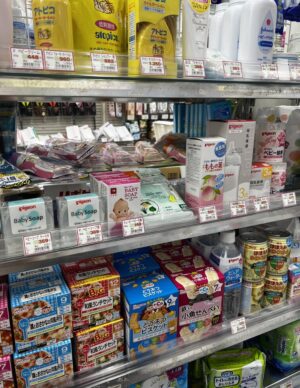
The baby food is on the bottom shelf in this picture. Left to right: “Chicken & Fish Western Style Bento” Baby Food for 9 months+ – in the blue packaging.
“Japanese style Lunch Set” baby food for 12 months+. Animal Crackers (Called Animal Biscuits, here tho) for 9 months+. In the blue box. Small fish flavoured rice crackers for 7 months plus – in the red box.
Filtered water (for making formula on the go) . Premixed formula called Raku Raku Milk (this can be put in a bottle and given to baby at room temperature.) It is called Raku Raku Milk and it is in the yellow can here.
Here are some more examples of baby food in Japan, This is at Tsuruha Drugstore in Koenji.
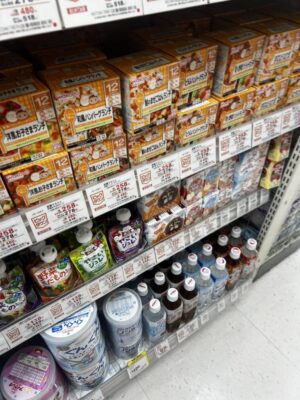
The red, green and purple pouches are pureed veg & fruit (red), green veg (green) and purple veg (purple). To the right of the purees are 100% apple and other fruit juices as well as barley tea made for babies.
The tins at the very bottom are different types of formula.
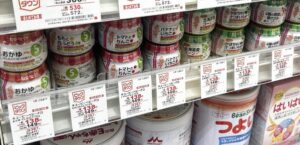
You can use google translate to work out the flavours but here is a simple list of flavours to give you an idea.
Left to Right:
Japanese Rice Porridge (Okayu), Peach & White Grape, Tomato & Apple, Banana & Strawberry, Hokkaido Corn, Pumpkin & Sweet Potato, 4 types of Root Veg & Chicken Veg.
This picture was taken at Tsuruha Drug Store in Koenji. Please use google translate to check for allergens and new ingredients. The numbers on the jars indicate how many months old the baby needs to be to consume.
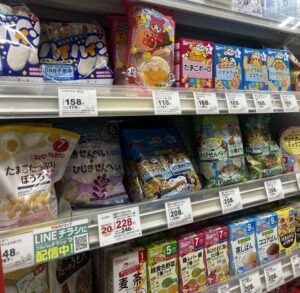
Top row: Colouring & Preservative Free Rice Crackers for babies called “Hai Hain”, Character “Anpanman” Rice Crackers for babies, Round Egg Crackers with added calcium (for 7 months+), Banana Cookies for Babies with added calcium (for 9 months+ ), Animal Biscuits with added calcium (for 9 months+), Milk Wafers for Babies with added calcium (for 9 months+).
Second Row:
Round egg crackers (for 7 months+), Fish Rice Crackers & Hijiki (sea vegetable) Rice Crackers) , Mixed Snack Packs for Banana Cookies, Edamame Biscuits and Sweet Potato Cookies, Snack Packs with Shrimp Crackers, White Bait Crackers, Seaweed Crackers.
Bottom Row:
Barley Tea for babies, Green & Yellow Veg puree, Chicken, Liver & Salmon Purees, Rice with Ankake Sauce, Microwaveable Steamed Bread Bun for Babies, Microwaveable Steamed Cocoa Steamed Bread Bun for babies, Seaweed & Veg flavouring/sprinkles to put on rice for babies.
If you’re worried about salt or sugar for a young baby I recommend bringing as much as you can from home.
Some parents (particularly those that haven’t travelled before) message me over and over with questions like “does this have sugar in it? does this have salt?” and then get back to me saying “it’s too much salt – I want it to be the same as we have at home.” Unfortunately, a part of travelling does require a little more flexibility than you might have at home so , if you’re like one of these parents, I recommend packing ahead as much as you can.
The quickest and easiest option is always going to be fresh produce.
For this reason I recommend seeking out fruit and vegetables at supermarkets and convenience stores. Convenience stores also have a surprising amount of fresh and healthy ingredients to work with. Options like bananas, cucumbers, carrots, tofu and even roasted sweet potatoes are commonly found in 24 hour convenience stores. Boiled eggs are also sold (although do have some salt added.). These are also great options if you are doing baby led weaning while in Japan.
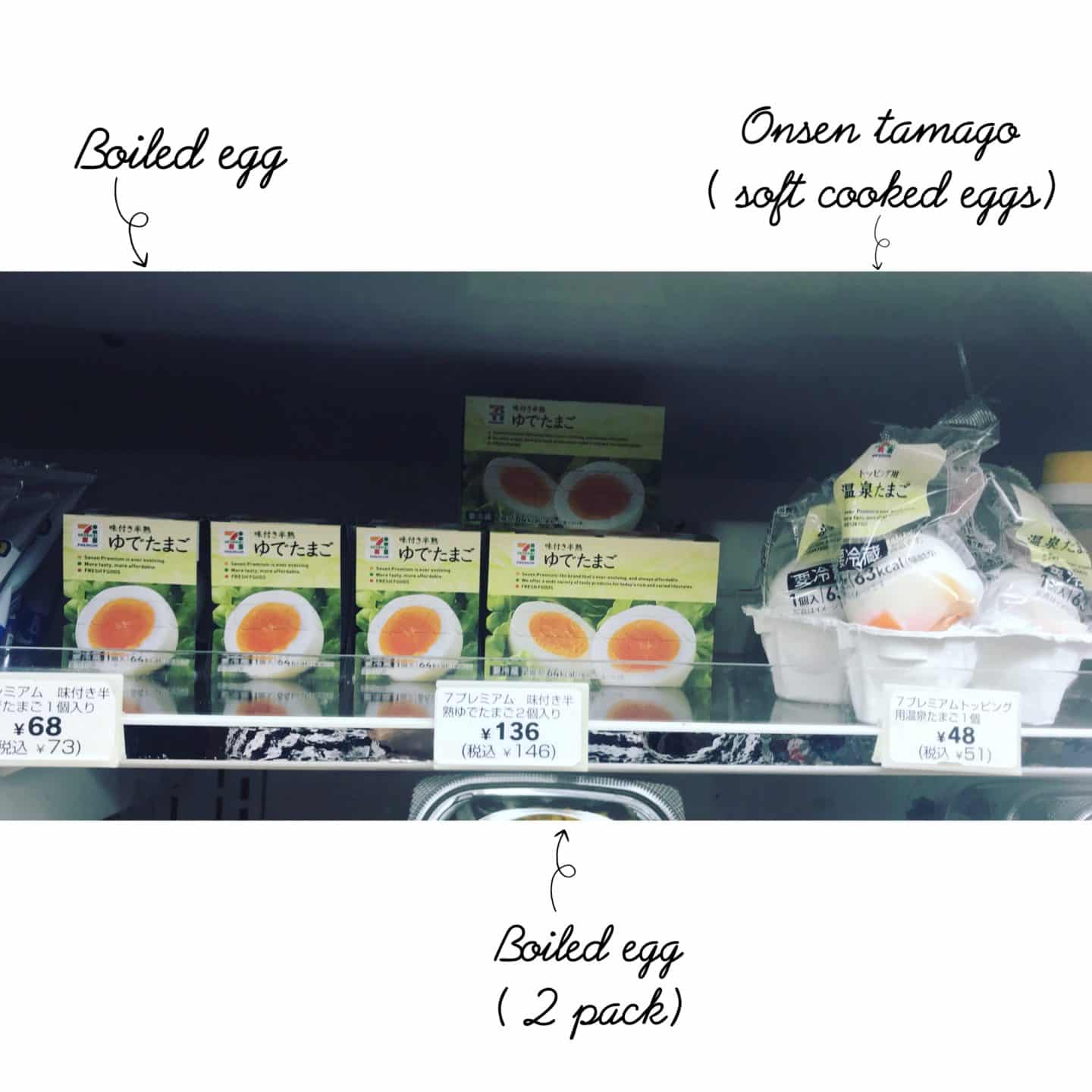
Sugar free and most common plain yoghurt options are these two:
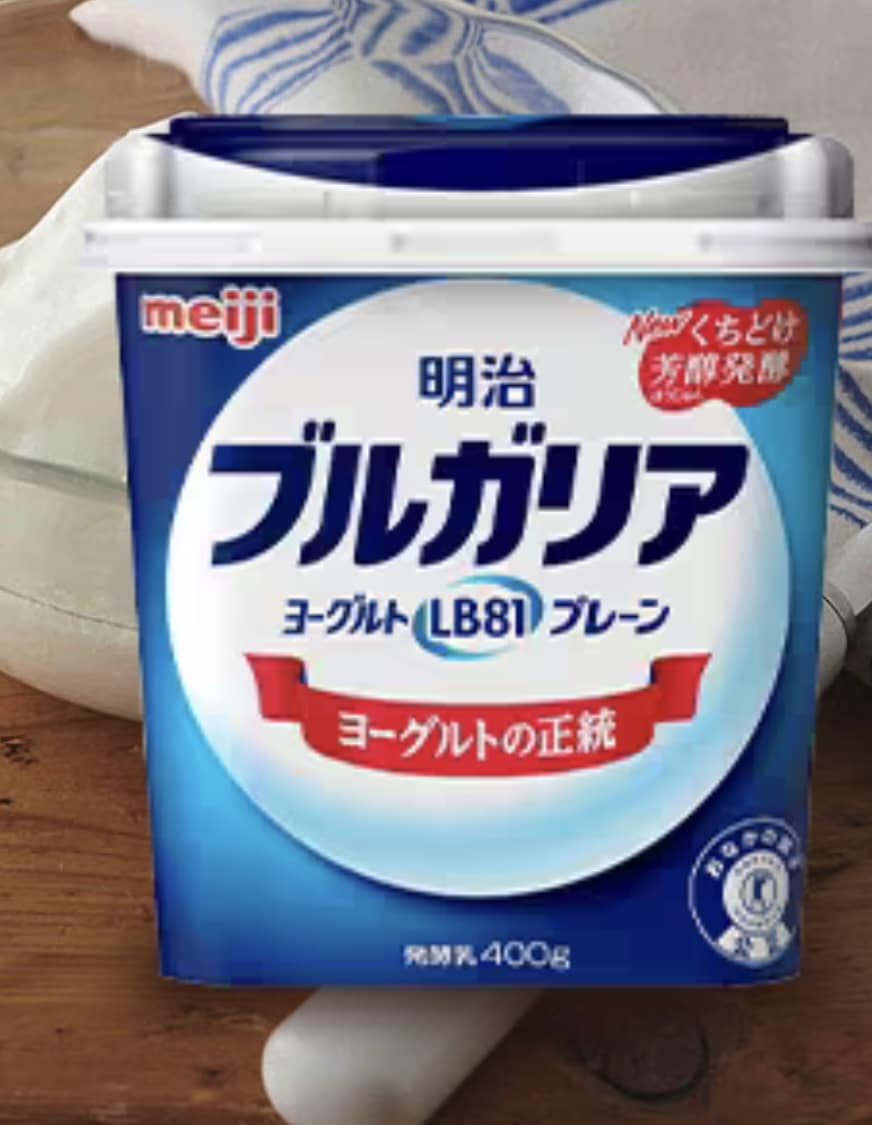
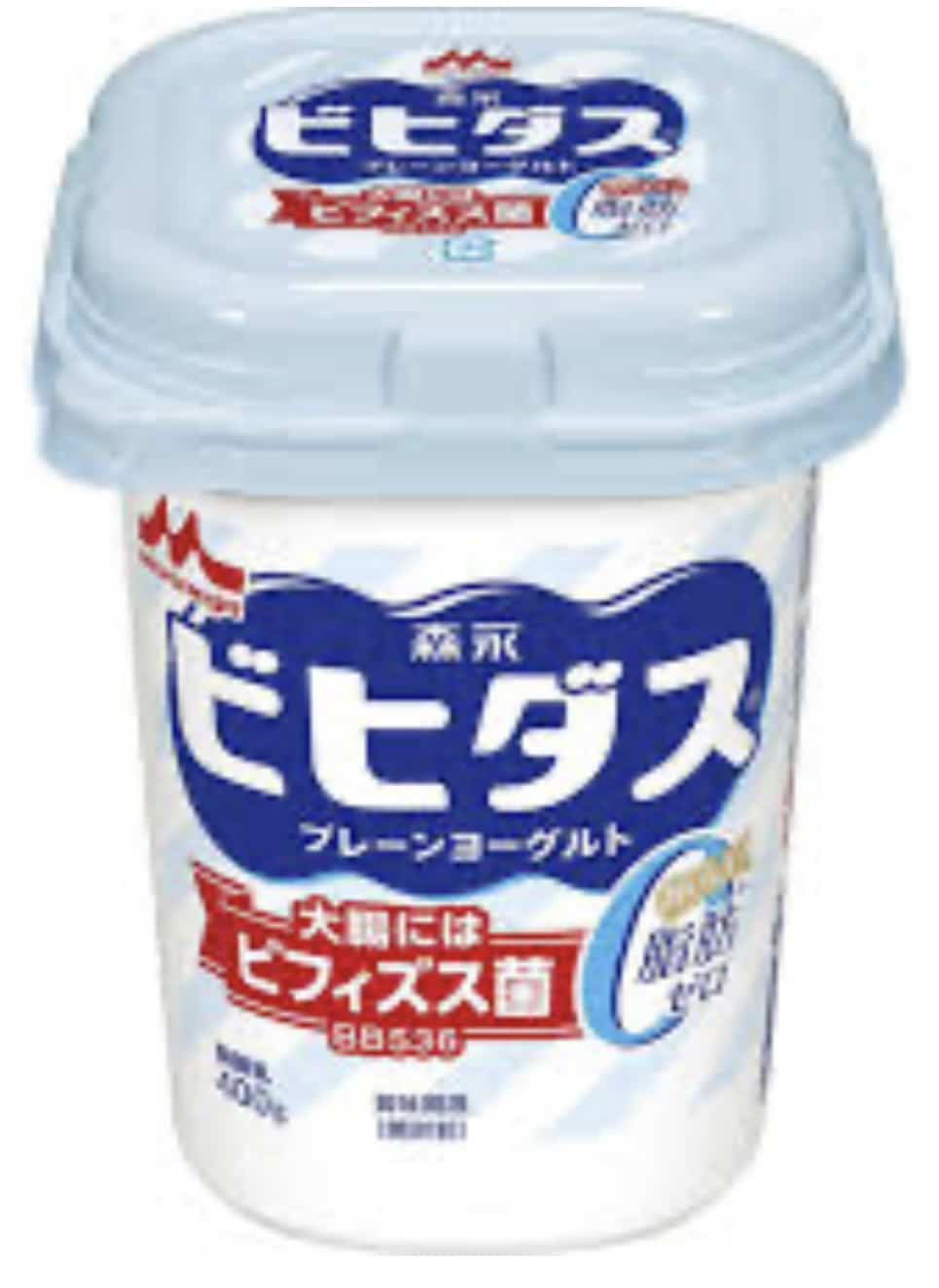
*See here for other Japanese convenience store tips like this
Alternatively, I recommend making it as you go.
This is another reason to look into a hotel with a kitchenette- buy a hand blender for approx 2000 yen at Bic Camera or Yodobashi Camera and make use of beautiful seasonal ingredients in Japan like kabocha pumpkin, nashi pears etc. I used to sometimes add a little veggie or chicken stock, one onion and a whatever vegetable I was adding and boil it up and then food blend. And for fruits like pears and plums I would just mash or stew.
In order to do this I highly recommend booking a hotel with a small kitchenette. Japan-wide I highly recommend the Mimaru chain and I have some other hotel options with beautifully appointed mini-kitchens in my Kyoto recommended hotels here.
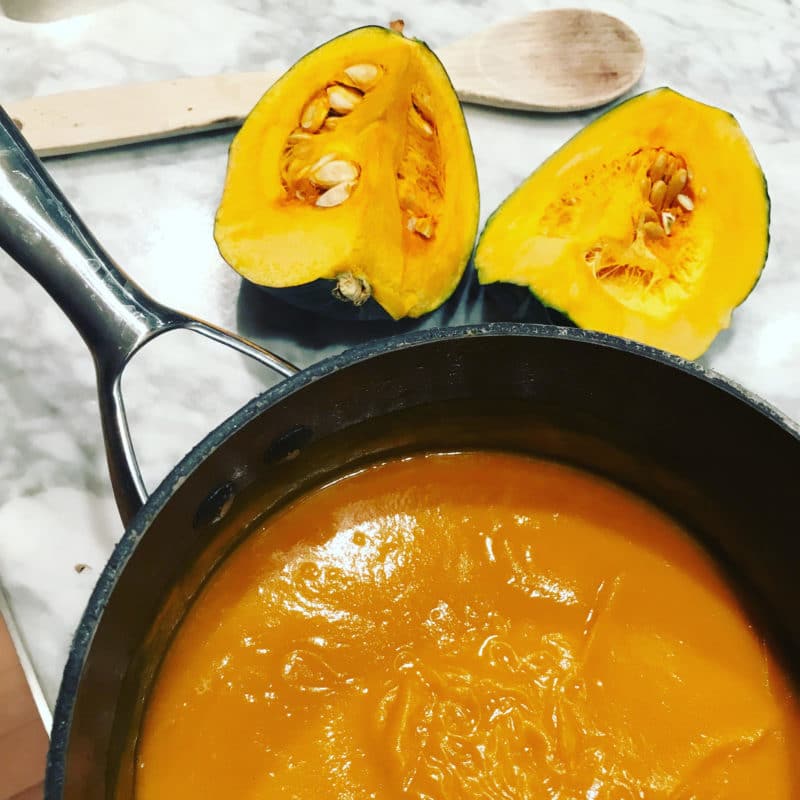
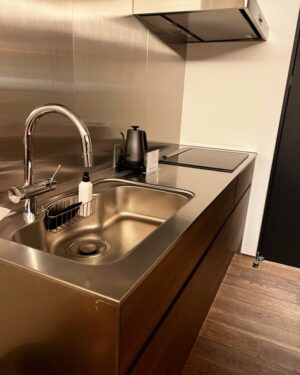
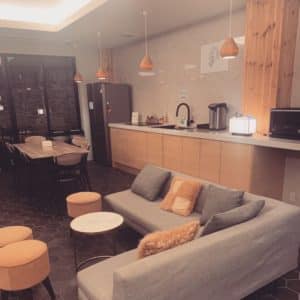
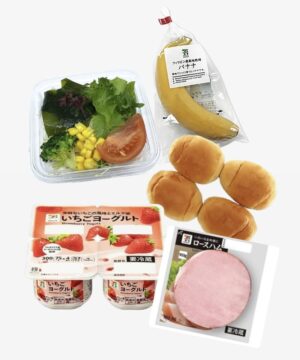
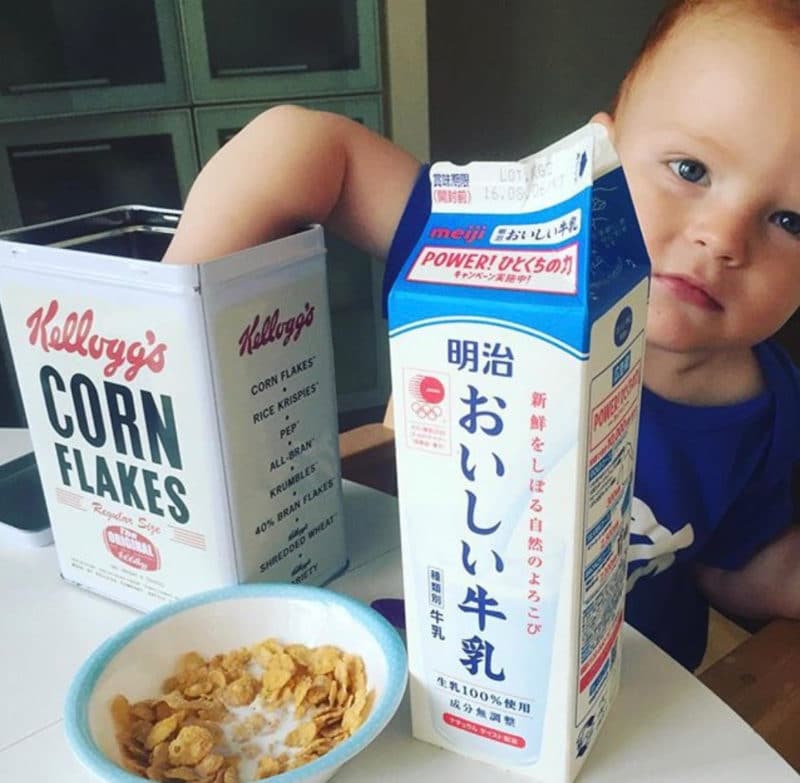
Where to buy baby soap and baby shampoo in Japan?
You will need to google “drugstore near me” for the biggest selection (the biggest drugstore brands tend to be Matsumoto Kiyoshi, Tomods, Sundrug and Welcia.). There is a baby soap brand literally called “Baby Soap” and a soap/shampoo for sensitive skin called “Medibaby.”
See here if you are looking for healthy snacks for kids at Japanese convenience stores.
See here if you are looking for more information for hotels in Japan with cots and cribs.
